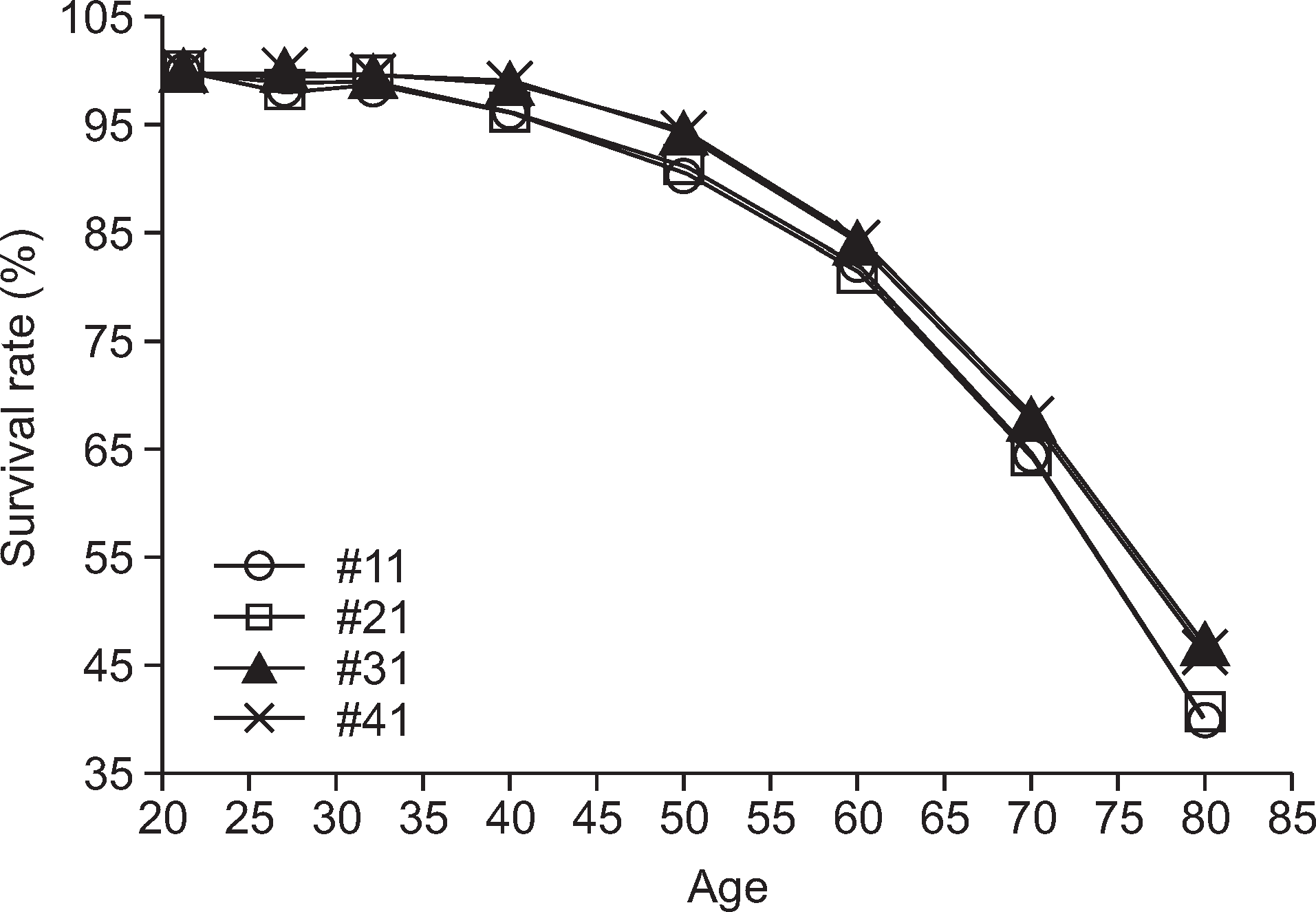1. Lee SK, Lee KW, Chang KW. Reasons of extracted permanent teeth in Korean population. J Korean Acad Oral Health. 2001; 25:139–163.
2. Klock KS. Patients’ perceptions of the decision-making process leading to extraction of permanent teeth in Norway. Community Dent Oral Epidemiol. 1995; 23:165–169.

3. Eckerbom M, Magnusson T, Martinsson T. Reasons for and incidence of tooth mortality in a Swedish population. Endodont Dent Traumatol. 1992; 8:230–234.

4. Klock KS, Haugejorden O. Primary reasons for extraction of permanent teeth in Norway: changes from 1968 to 1988. Community Dent Oral Epidemiol. 1991; 19:336–341.

5. Morita M, Kimura T, Kanegae M, Ishikawa A, Watanabe T. Reasons for extraction of permanent teeth in Japan. Community Dent Oral Epidemiol. 1994; 22:303–306.

6. Reich E, Hiller KA. Reasons for tooth extraction in the western states of Germany. Community Dent Oral Epidemiol. 1993; 21:379–383.

7. Murray H, Locker D, Kay EJ. Patterns of and reasons for tooth extractions in gerneral dental practice in Ontario, Canada. Community Dent Oral Epidemiol. 1996; 24:196–200.
8. Ong G. Periodontal reasons for tooth loss in an Asian population. J Clin Periodontol. 1995; 23:307–309.

9. Angelillo IF, Nobile CGA, Pavia M. Survey of reasons for extraction of permanent teeth in Italy. Community Dent Oral Epidemiol. 1996; 24:336–340.

10. Kim YN, Kwon HK, Chung WG, Cho YS, Choi YH. The association of perceived oral health with oral epidemiological indicators in Korean adults. J Korean Acad Oral Health. 2005; 29:250–260.
11. Mun SJ, Chung WG, Kim NH. Changes in daily toothbrushing frequency among Korean adults from 2000 to 2006. J Korean Acad Oral Health. 2009; 33:183–191.
12. Park JH, Kim YN, Yoo JH, Kim MY, Kim BI, Kwon HK. Relationship between smoking and periodontal pocket formation in Korean adults. J Korean Acad Oral Health 2005;29:293-301. in relation to socioeconomic factors and dental health behaviors among Korean adults. J Korean Acad Oral Health. 2003; 27:319–328.
13. Han DH, Kim JB. The association between smoking and periodontitis: findings from the Korean National Oral Health Survey 2006. J Korean Acad Oral Health. 2009; 33:634–643.
14. Kim GS, Lee HJ, Kim YS, Jeon JG, Chang KW. Logistic regression analysis of factors affecting survival of permanent second molars in Korean adults. J Korean Acad Oral Health. 2013; 37:232–240.

15. Choi YH, Suh I, Nam JM, Oh DK, Son HK, Kwon HK. Associations of missing teeth with medical status. J Korean Acad Oral Health. 2002; 26:169–180.
16. Woo HB. Differences in healthy life expectancy by gender and education for middle-aged and older Koreans. Korean Journal of Sociology. 2009; 43:165–187.
17. Lee SE. Differential life expectancy and the progressivity of the national pension system in Korea. Korea Social Security Studies. 2006; 22:217–240.
18. Lee HK, Shon KH. A Study on the causes of death that contributed the gaps of life expectancy among Korean and Japanese elderly. Journal of the Korea Gerontological Society. 2005; 25:133–147.
19. Kim YS, Lee CH, Kim SG, Chang KW. Dental Aesthetic Index (DAI) of Adolescent in Chollabukdo. J Korean Acad Oral Health. 2002; 26:303–312.
20. Kim HY. Evaluation of effects of health behaviors and dental service use on the association between socioeconomic status and unmet dental treatment needs. J Korean Acad Oral Health. 2006; 30:85–94.
21. Koivusilta L, Honkala S, Honkala E, Rimpelae A. Toothbrushing as part of the adolescent lifestyle predicts education level. J Dent Res. 2003; 82:361–366.
22. Bergstrom J. Periodontitis and smoking: an evidence-based appraisal. J Evid Based Dent Pract. 2009; 6:33–41.
23. Burt B. Research, science, and therapy committee of the American Academy of Periodontology. Position Paper: epidemiology of periodontal diseases. J Periodontol. 2005; 76:1406–1419.
24. Han GS, Kim YS, Kang JK, Hwang YS, Han DH, Bae KH. Dental hygiene and dental education: Relation of smoking and periodontal status among 30s-50s adults in metropolitan area. J Korean Acad Oral Health. 2008; 32:250–260.
25. Kim HD, Paik DM, Ko DH, Paik DI. Influence of cardiovascular related disease on periodontitis. J Korean Acad Oral Health. 2006; 30:46–55.





 PDF
PDF ePub
ePub Citation
Citation Print
Print


 XML Download
XML Download